Part 13: Puzzle Time IIII


[Music: Pursuit in the Night]
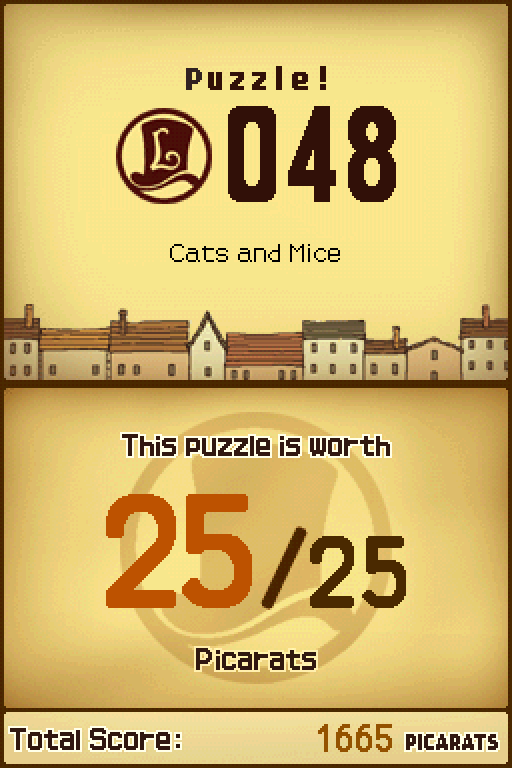
Compared to the last mouse puzzle this one is a bit trickier. Doesn't mean much, but the thought's nice.
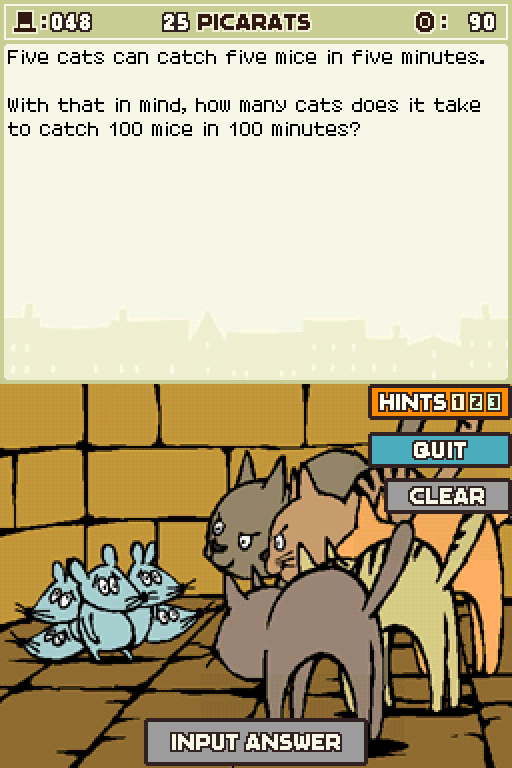
1. Five cats can catch five mice in five minutes. If there were 10 mice running around, how long would it take for those same five cats to catch them?
2. Remember, this puzzle isn't asking how much time it takes to catch 100 mice. Read the problem again. The wording makes it easy to forget what you are really looking for.
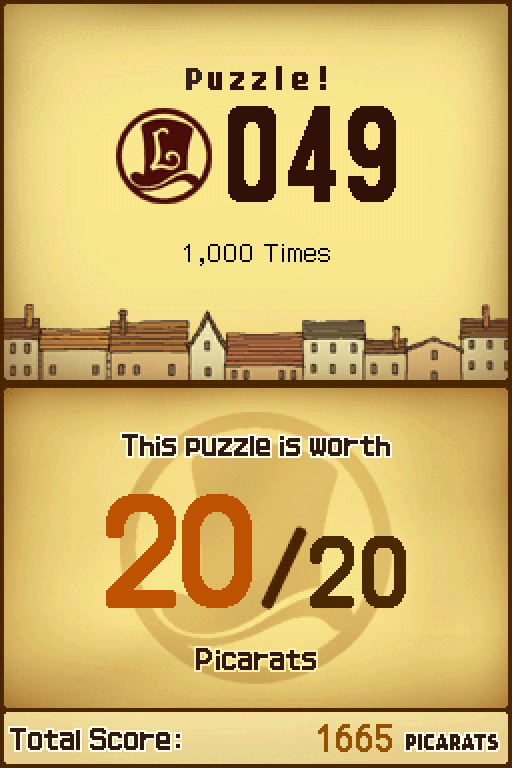
This one might catch someone off guard, but it's not too bad.
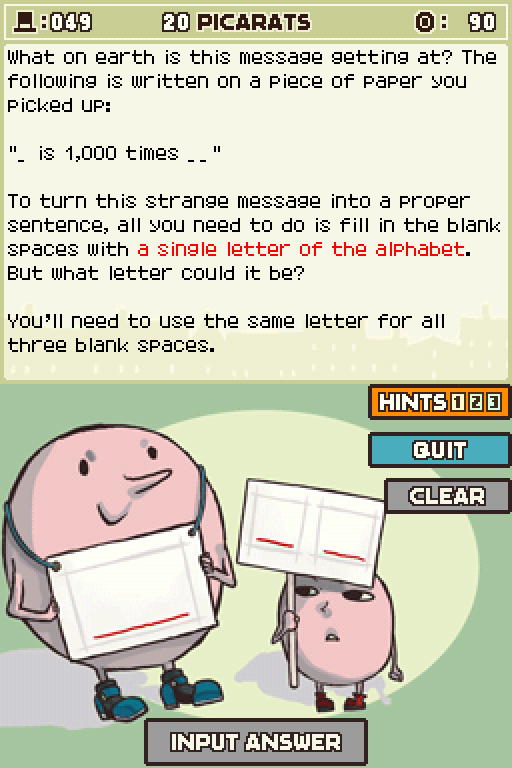
1. English only has 26 letters. If you try out each letter, you're bound to come across the solution eventually.
2. The puzzle talks about one object being 1,000 times another. Perhaps this phrase relates to size in some way?
3. This puzzle deals with units. Can you think of any letters used to indicate measurements of length?
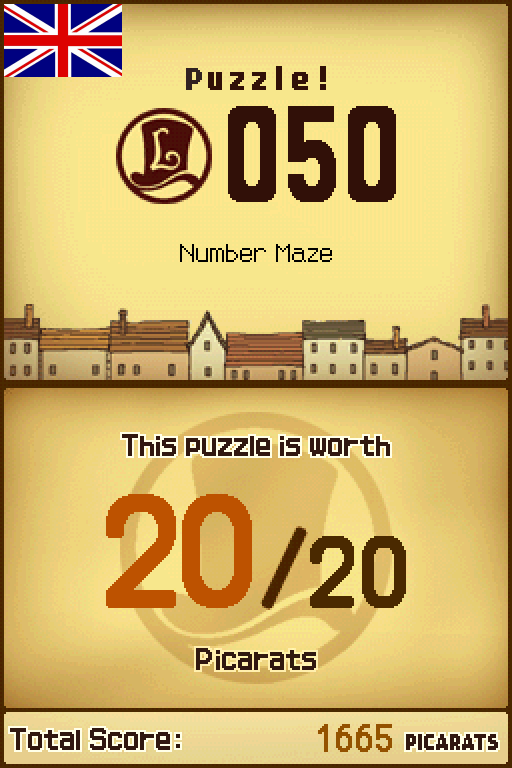
Another one that's nice and simple. Not much to complain about here.
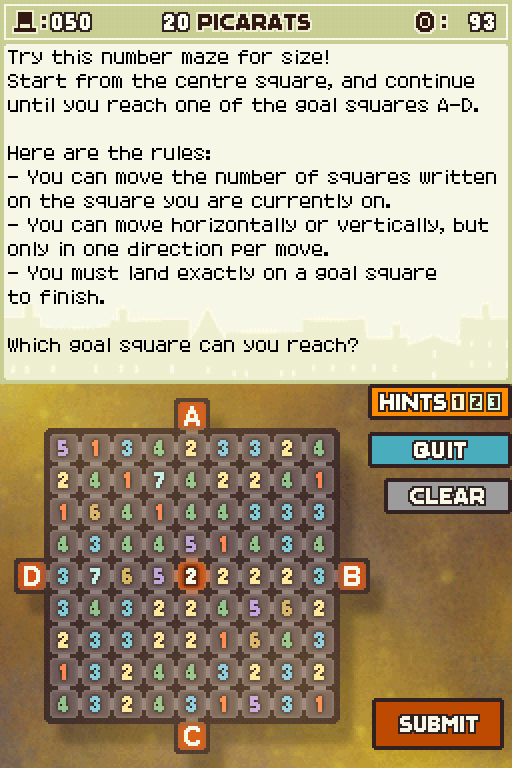
1. If you try out all the possible routes from the starting point, you'll eventually find the answer. But if you look at the problem a little differently, it won't take so long!
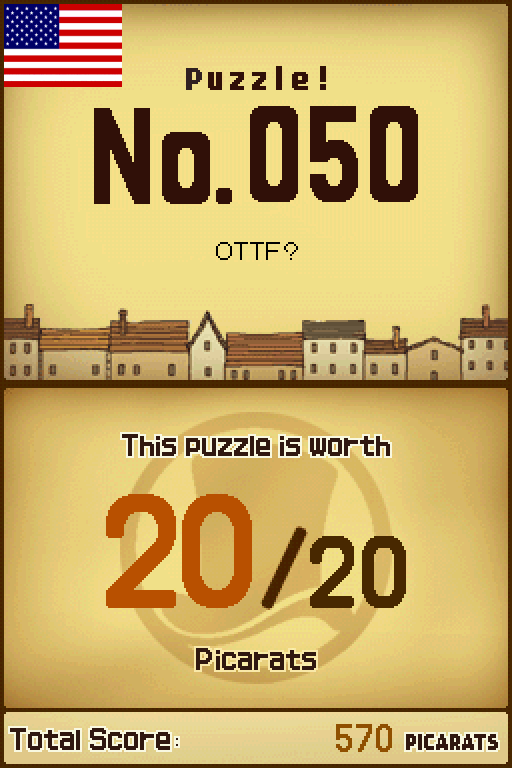
This one, on the other hand, I still just sat there unsure of how to figure it out for a minute.
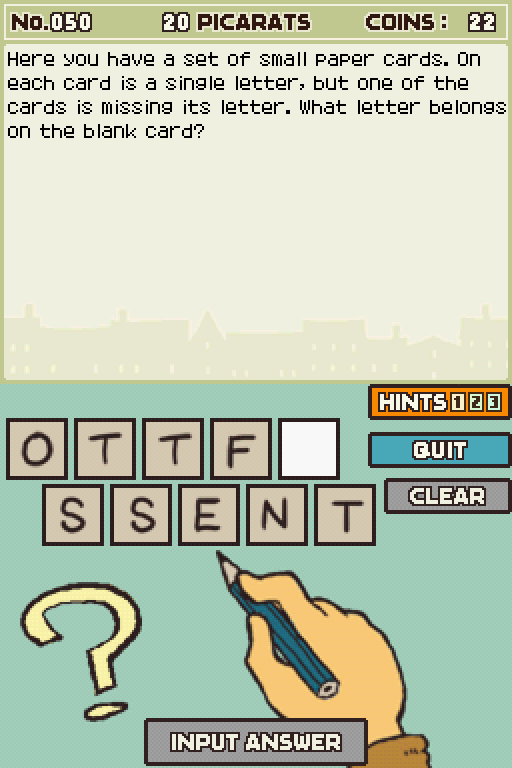
1. If you're guessing that there's some order to the way the cards are lined up, you're absolutely correct. Think about what series of things could be represented here.
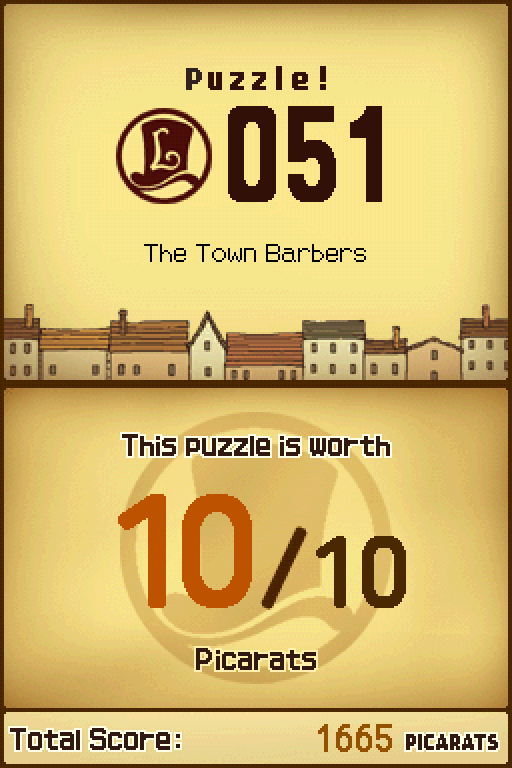
I can't remember the last time we saw a puzzle worth 10. Not much else to say 'bout this one.

1. You don't cut your own hair, do you?
2. Everyone in this town has one of these two handsome gents cut their hair. The two barbers themselves are no exception to that statement.
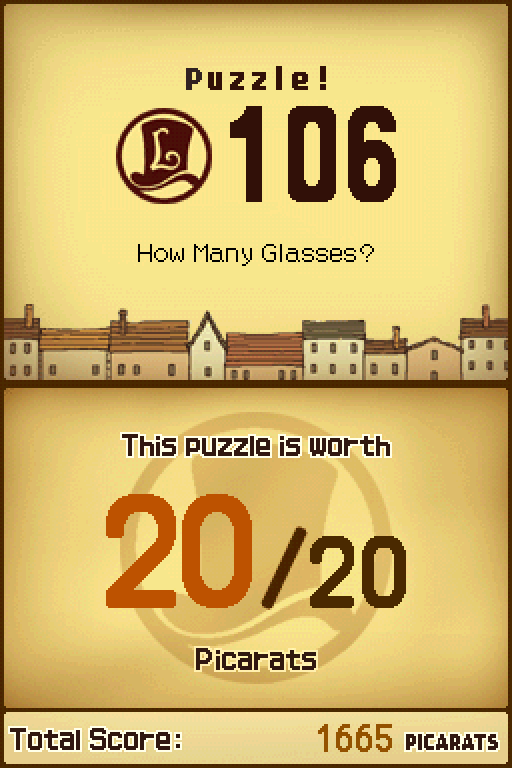
Nothing much to say about this one either, sorry! This batch is pretty uninteresting, huh?

1. If it weren't against the rules for this puzzle, it would be easy to just switch the second and fourth glasses with each other. But since you can only pick up one glass at a time that idea is right out.
2. You have to move things around so that there is juice in every other glass. Surely there's a way to do this that doesn't involve switching the glasses themselves around.

At least this one is interesting in its setup and premise.
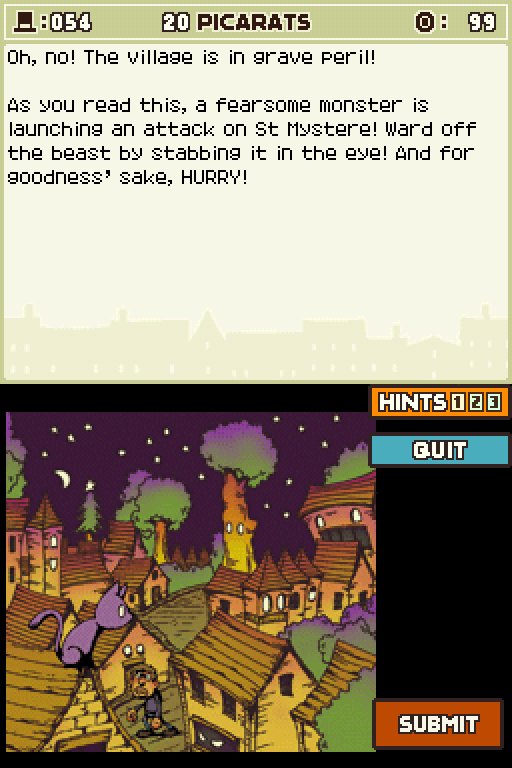
1. At a glance, the picture appears to be filled with glowing objects that could well be eyes. But remember, there's only one monster attacking the village.
2. The monster is huge. In fact, it's so big that it could well cover the whole of the town!
3. Have you figured out where the monster is going to strike from? Look to the skies!
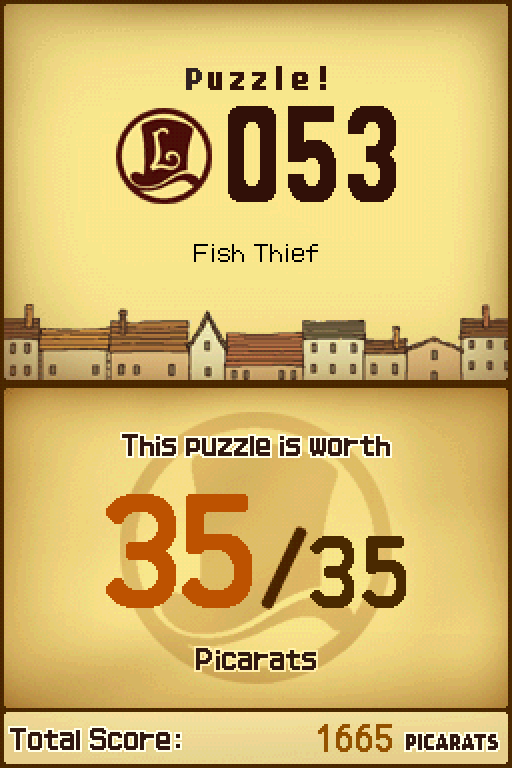
Now this one might be at least a little tricky. It's also, I believe, the first one worth 35 we've seen which is something I guess.
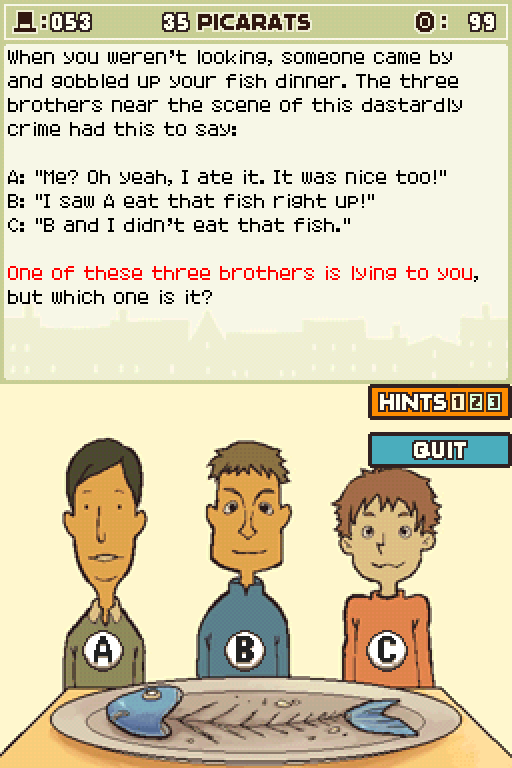
1. Only one person is lying here, so let's take a closer look at their statements. If you assume A is lying, then A didn't eat the fish. If that's true, does it support the other two brothers' statement, or does it make someone else a liar? Try working things out logically like this in order to find your answer.
2. If B is lying, doesn't that also mean that what A said is...less than accurate? Surely by now you've realized that more than one person could have helped eat this fish, right?
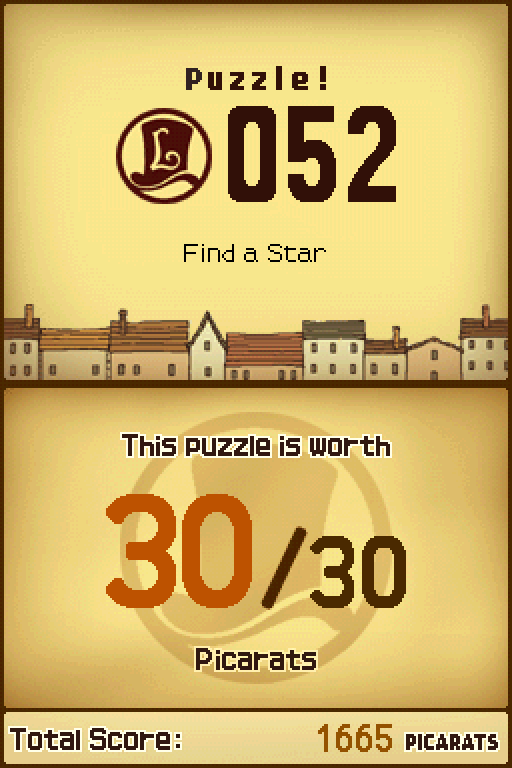
Now this one? I hate this one. I absolutely despise this one and anything else tangentially related to it.
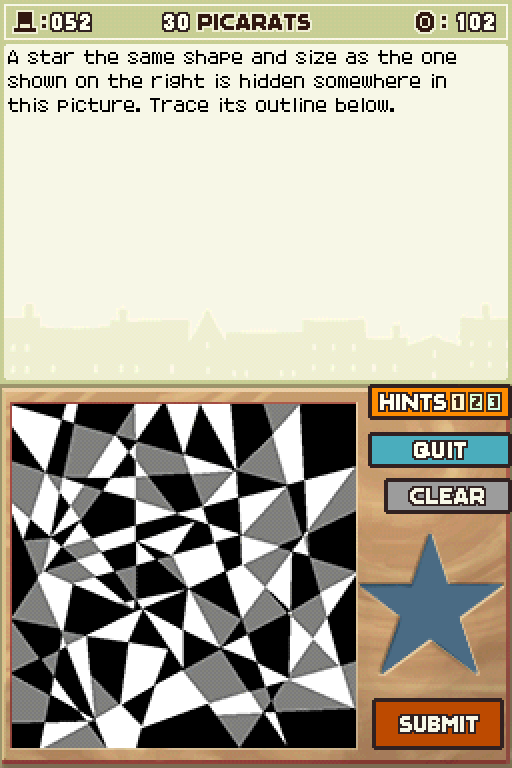
1. There's no way around it! You're just going to have to search this picture long and hard for the answer. Only a star with the exact shape and size as the example star will do! no defective, misshapen, or distorted stars will be accepted!
2. Pay special attention to the left side of the picture.
3. Have you tried searching the upper-left corner yet?
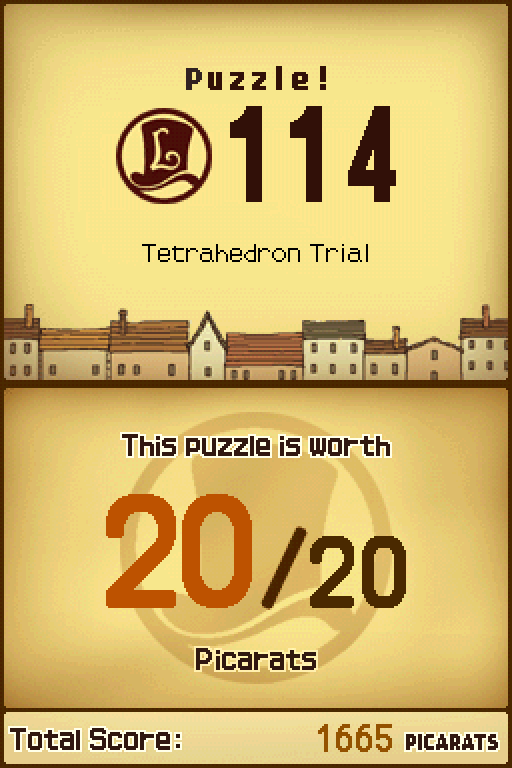
Another one I'm legitimately bad at because...
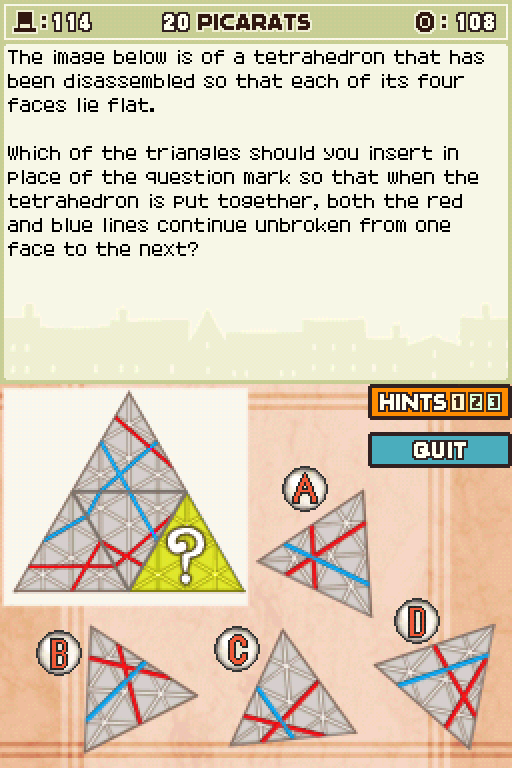
I cannot picture these kinds of things. I am really, really bad at picturing how things would look in 3D from a 2D design.
1. Look at how the red and blue lines cross over each edge of the tetrahedron. Note that three lines, one blue and two red, cross over the edges of the center triangle in the collapsed tetrahedron.
2. The missing triangle's right side connects with the top triangle's right side. you can see a red line and two blue lines here.
3. The bottom side of the missing triangle connects with the bottom of the leftmost triangle. Only a single red line passes over this edge. Read previous hints and check which lines cross where. Do that, and the answer is yours.
But, y'know, these are all well and good but since this mini-update is nothing but puzzles lets add a few more for good measure.
[Music: Professor Layton's Theme (Live)] (even if you normally skip these listen to this one.)
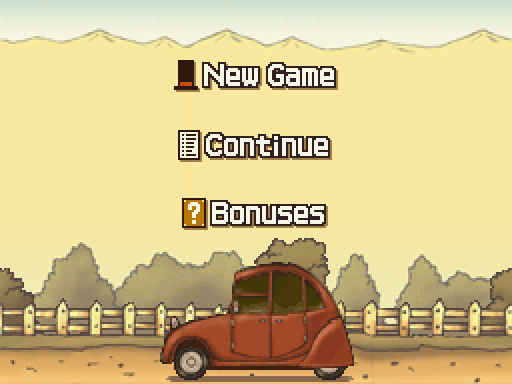
Y'see, back out on the title screen so long as you have a save file, you get access to a section called Bonuses.
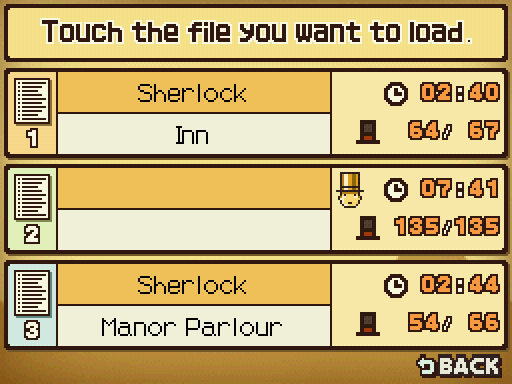
When you choose it, just like when you load normally, you choose one of your three save files to load.
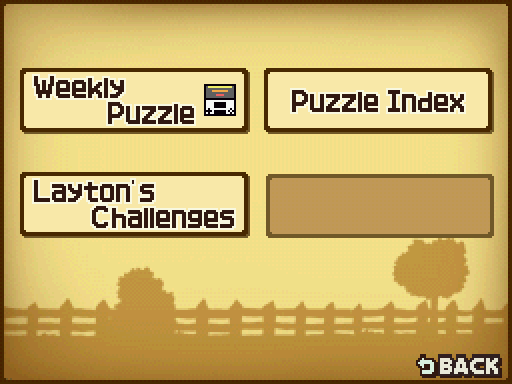
Depending on how far in you are with that file, you get more or less options. If you load a file that can't access any Layton Challenges, you only get the first two.
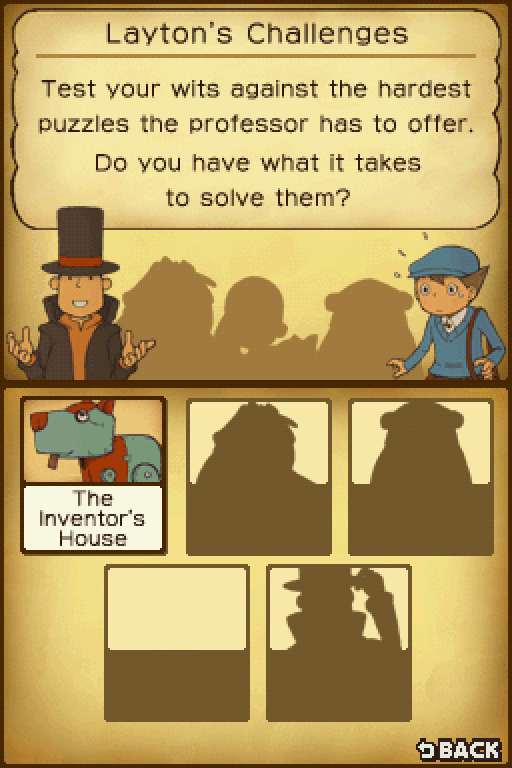
Because we completed the robot dog a short while back, we have access to one of the five sets of Layton Challenges. We'll deal with the other four as, and when, they become available.
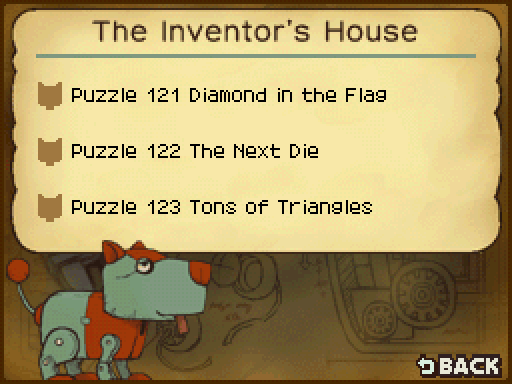
For finishing Gizmo, we gained access to 3 puzzles that are otherwise inaccessible. As a rule, they're meant to be harder than anything else we've seen to date. In practice? I'll leave that one up to you.
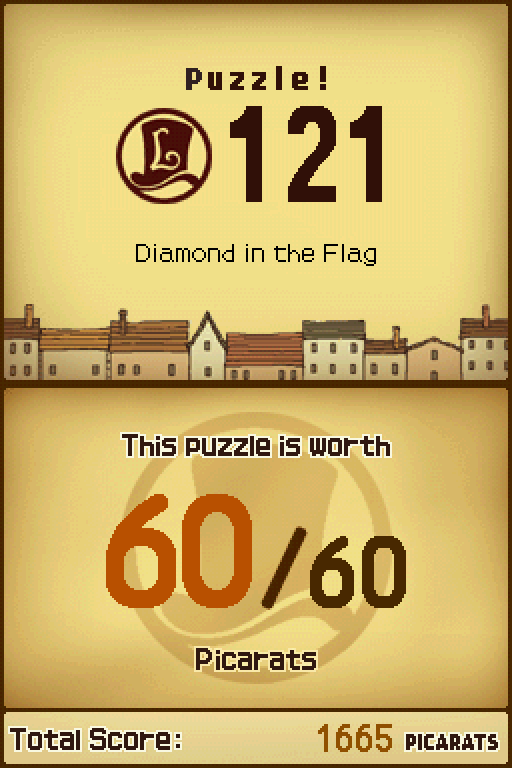
They're all worth a little bit more than we're used to though.
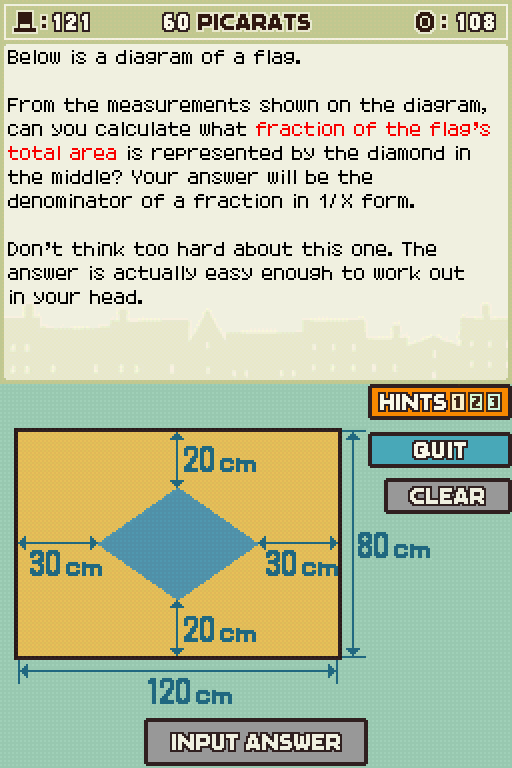
For reference, I think this one is the hardest of the lot by far but I have a tendency to overthink it. So, y'know, my opinion might not count for much.
1. Help yourself out by dividing up the flag. First, split the flag into four equally sized rectangles by drawing a vertical line and a horizontal line through the middle of the flag. This will divide the diamond into quarters as well.
2. Examine one of the flag's new quarters. These smaller rectangles can actually be broken down into fourths again. Be careful when calculating the length for each side. Is each small rectangle really 30 by 20 inches?
3. When you divide the small rectangle into fourths, you will end up including a portion of the diamond in one of the smallest rectangles. What fraction of the rectangle's area does that slice of the diamond represent? Figure that out and you're a step away from the solution.
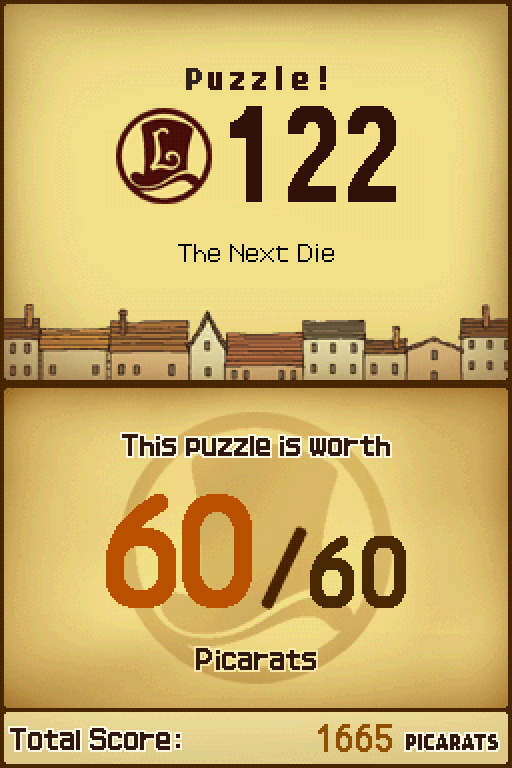
A bit easier than the above one, but still not wholly easy. I got it on my first try, but it took a little while to be sure.
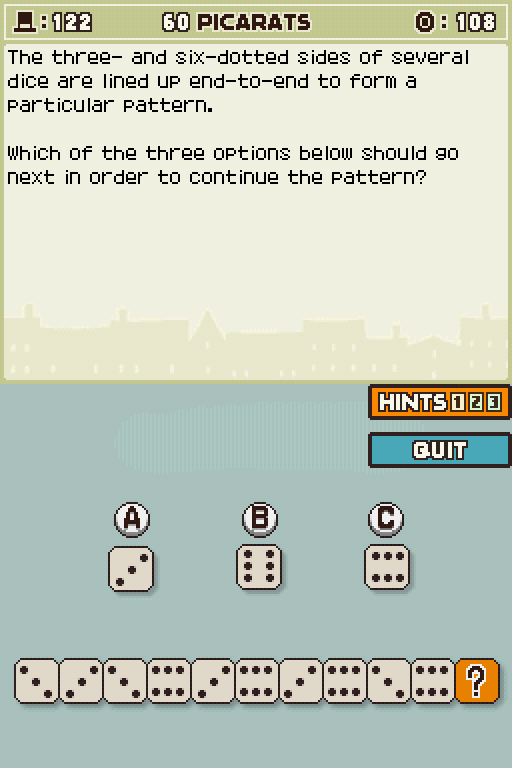
1. Examine the dice and try to find a reason or method to their orientation. You might think that the dice's arrangement has to do with the total number of dots, but this puzzle is far more simple than that. Just pay attention to the way the dots on the dice line up.
2. Look at the way the dots are lined up. See how there are three rows of dots stacked on top of one another? One of those rows holds the key to this puzzle.
3. The dots on the dice form three rows that are stacked on top of each other. You need to focus on what's going on in the top row. Scan the row from the left to the right. Do you notice anything going on?

Definitely the easiest one of the three, but that's not saying much.
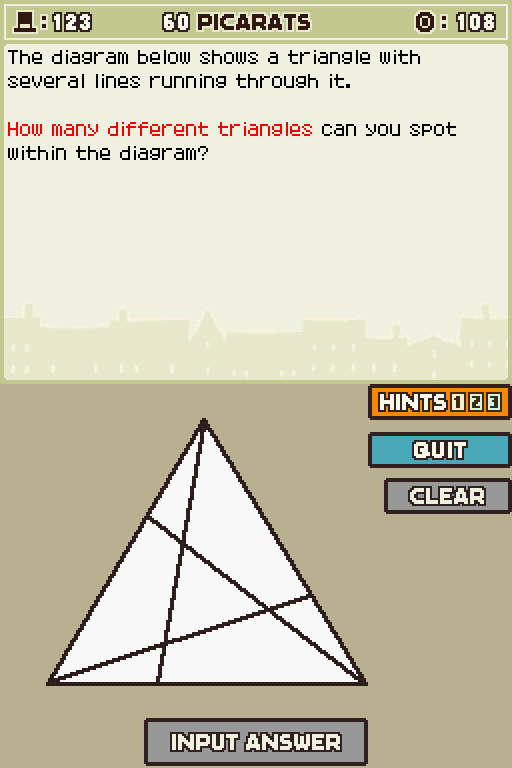
1. There really is no trick at work here. You just need to find all the triangles you can. Look carefully so you don't miss any triangles that are hard to spot.
2. Several triangles can share a single side. To make matters even more confusing, you need to look at every side of the big triangle to find all the triangles. Make sure you don't accidentally count a single triangle twice during your search.
3. First, go ahead and count the large triangle all by itself. Then, add one of the three lines that splits the big triangle into two. Now your total has grown to three triangles. Next, add one more line to your big triangle and you'll create three new triangles. There are three combinations of two lines possible. Good luck finding the rest.